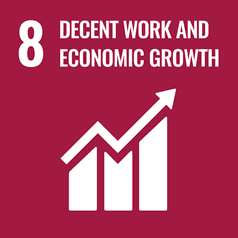While work from home arrangements can work, in the case of the [Australian Public Service], it has become a right that is creating inefficiency.
Hume said Labor had given public servants a “blank cheque” to work from home, creating an “unsustainable” system that was no longer working.
She stressed that exceptions “can and will be made”, but only “where they work for everyone rather than be enforced on teams by an individual”.
Few workplace issues have drawn such heated debate as whether people should be allowed to work from home. The Coalition’s latest election promise, with parallels to a similar move by Donald Trump in the United States, has brought these questions back into the spotlight.
What impact do work from home arrangements have, not only on performance and productivity but also employee wellbeing? Is it really wise to reverse course?
Our research has examined these questions in detail – and we’ve found a changing picture.

Our research
We have examined the impacts of working from home on staff performance and productivity in Australian workplaces as part of the Australian Workplace Index, surveying 2,932 Australian employees across 2022 and 2024.
This is a research collaboration project between Australian National University and University of Newcastle.
An Australian Workplace Index 2022 working paper (which has not been peer-reviewed) actually suggested working from home was linked with a number of negative impacts.
In 2022, we saw that compared to those who didn’t, employees who worked from home three to four days a week experienced lower wellbeing, higher depression and anxiety, and higher loneliness.
They also experienced more administrative hassles, higher pressure to meet targets and increased levels of conflict with supervisors and colleagues.
We found working from home was also associated with a reduction in staff productivity, job-target performance and an increase in staff turnover intentions.
A changing picture
We have recently completed analysis for a similar study based on data from 2024, to be published in an upcoming working paper. And it paints a very different picture.
We found the negative impacts of working from home, originally found in 2022, had reversed in 2024.
In the most recent 2024 Australian Workplace Index employment data, we see no significant difference in productivity between employees who work from home and those in the office.
In fact, the latest data suggest numerous benefits.
For example, staff who worked from home one or more days a week had 9.9% more autonomy in how they carried out their work. Those with higher job autonomy were up to 16.8% more productive in their work when compared to those with low job autonomy.
We found staff who work from home also save on average 100 minutes in commuting time each day.
But on top of this, staff who worked from home one or more days a week were 10.6% less burnt out from work compared to those who never did, and had reported lower intention to quit their jobs.

Better support for employees
This positive trend likely reflects investment by employers in improving support for staff who work from home.
In 2024, we found a majority of organisations (69%) now had a work-from-home policy in place.
There was also an increase in the physical, technological and psychological infrastructure support available to staff who work from home. For example:
- Physical: 82% of staff have a dedicated workspace, 93% have their own desk, and 93% have air conditioning.
- Technological: 85% of staff have access to IT support, 94% have access to collaborative technology and 95% have internet access.
- Psychological: 80% of staff have access to psychological support from their supervisor and 72% have access to counselling services.
Importantly, employees still value the opportunity highly. Our 2024 data show 38% of Australian employees chose to work from home for 50% or more of their work hours.
32% of Australian employees would prefer to exclusively work from home, 41% prefer a hybrid option, while 27% prefer to work exclusively from the office.
This article is republished from The Conversation under a Creative Commons license. Read the original article.
Aligned with the United Nations Sustainable Development Goals
Related Articles

The High Court made a landmark decision on native title law. Here’s what it means
Aboriginal and Torres Strait Islander readers are advised this article contains the name of a deceased person.
Read more

From bean-counters to cyber-sleuths: how accountants are a frontline defence against online crime
Once considered to be simply “bean counters”, accountants now play an important role in the defence, investigation and protection against cybercrime.
Read more

How can you stay safe from cyber attacks? Here are 2 simple checklists from experts
“Cyber security” may sound like a far-off worry for big corporations or telcos, but that’s far from the case.
Read more

Bold climate action benefits more than just the environment - it's also great for business
As the world grapples with the intensifying challenges of climate change, businesses are under increasing pressure to take action.
Read more

Conservative governments protect more land while socialists and nationalists threaten more species
The dire state of biodiversity across the globe suggests not all governments are willing to act decisively to protect nature. Why is that the case, and is a country’s political ideology a factor?
Read more

Like being ‘slapped’ or ‘kicked’: judicial bullying is a problem in Australian courtrooms
Bullying by judges, magistrates and other judicial officers is a factor in many lawyers leaving the profession. Our latest research has shown that judicial bullying remains an issue across all states in Australia.
Read more
